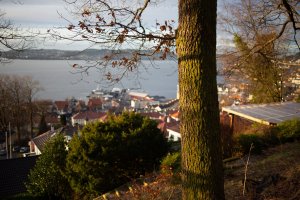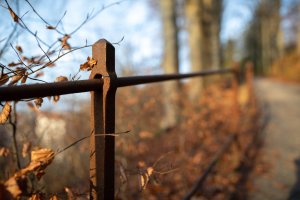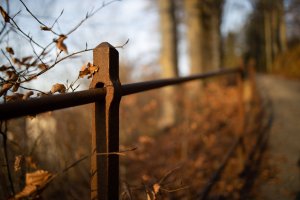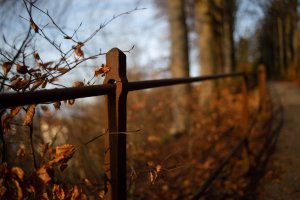Today I had a photo walk bringing a 6D fitted with a EG-S matte screen and a 35mm Carl Zeiss Milvus f2 lens, together with a 5DIV with the 35LII and the EOS R with the RF 35mm f1.8. I would like to share some insights I got when using and comparing them today.
Note that we had a low sun today, with really nice light for photography. I did street shooting, mainly on still subjects.
As some of you may have noticed, I have been very happy with my EOS R. I can't praise it enough for the AF and the RF lenses. Its AF wipes the floor with the 1DXII and 5DIV, when it comes to low light AF, and AF precision with large aperture lenses, and especially in AI Servo in low light using large aperture lenses. Further, I mostly do find the EVF to be better than an OVF in low light situations.
When shooting still subjects mostly at f2 with the 6D and Carl Zeiss 35 f2 lens today, I had a great time. I loved using the combo for "artistic" photography. The OVF is soo!!! much better than the EVF when it comes to displaying fine detail in a scene. Using the 6D-combo, it was easy to see the the details that were in focus. For the shooting I did, the OVF really did help in terms of composing the photographs. It was inspiring and boosted my creativity. I loved it!
When I pulled out the EOS R for taking the comparison photographs, I could not get the feel for the scene using the EVF. The fine details were missing, and composing the scene felt kind of random. It was hard to tell the outcome. It was less inspiring and less fun to use in that situation.
Honestly, the 5DIV and 35LII combo was a bit in between the 6D and EOS R, when it came to the "joy" of using it. I believe it comes down to the matte screen for manual focus that I have in the 6D. It makes it easier to tell where the field of focus is. For still subjects, I really do find the manual focusing to be more stimulating to my creativity, than using the joystick for moving the focusing point around. When using manual focus on the 6D I become more aware of the framing and the "best" place to place the focus point.
So, for shooting still subjects in good lighting, I have much more fun and joy using a 6D with a EG-S matte screen and manual focus lenses, than I have using the EOS R and its EVF.
About the lenses. They are all very solid performers, and it is quite hard to tell them apart, even when pixel peeping.
The RF 35 f1.8 has me convinced when it comes to sharpness. It is really nice and sharp. Neither of the other lenses were sharper in the shots I got today. Its bokeh is a bit better than the Carl Zeiss 35 f2 Milvus in comparable situations. I did not expect that.
The 35LII has the superior bokeh. I was surprised however, that I didn't find it to be significantly better in terms of color and clarity in the photographs I took today. Sharpness wise, the RF 35 f1.8 seemed on par, but that could be due to less precise focus on the 5DIV, compared to the EOS R.
The Carl Zeiss 35 f2 Milvus is a nice lens, but I did not find it to be sharper or have better bokeh than the RF 35 f1.8. Combined with the 6D though, I did like the colors I got from it over the ones I got from the 35LLII and RF35. It should be noted that I did not take exact comparison shots. I did not use a tripod, and exposures were not exactly the same.
What became clear to me is that DSLRs with their optical viewfinders are still way superior for composing images in good light conditions. Seeing the fine detail in a scene is very important because it adds to and triggers my creativity. It is much more inspiring in use than an EVF.
The EVF in the EOS R was not able to inspire me in the same way, in the soft sunlight I had today.
Note that we had a low sun today, with really nice light for photography. I did street shooting, mainly on still subjects.
As some of you may have noticed, I have been very happy with my EOS R. I can't praise it enough for the AF and the RF lenses. Its AF wipes the floor with the 1DXII and 5DIV, when it comes to low light AF, and AF precision with large aperture lenses, and especially in AI Servo in low light using large aperture lenses. Further, I mostly do find the EVF to be better than an OVF in low light situations.
When shooting still subjects mostly at f2 with the 6D and Carl Zeiss 35 f2 lens today, I had a great time. I loved using the combo for "artistic" photography. The OVF is soo!!! much better than the EVF when it comes to displaying fine detail in a scene. Using the 6D-combo, it was easy to see the the details that were in focus. For the shooting I did, the OVF really did help in terms of composing the photographs. It was inspiring and boosted my creativity. I loved it!
When I pulled out the EOS R for taking the comparison photographs, I could not get the feel for the scene using the EVF. The fine details were missing, and composing the scene felt kind of random. It was hard to tell the outcome. It was less inspiring and less fun to use in that situation.
Honestly, the 5DIV and 35LII combo was a bit in between the 6D and EOS R, when it came to the "joy" of using it. I believe it comes down to the matte screen for manual focus that I have in the 6D. It makes it easier to tell where the field of focus is. For still subjects, I really do find the manual focusing to be more stimulating to my creativity, than using the joystick for moving the focusing point around. When using manual focus on the 6D I become more aware of the framing and the "best" place to place the focus point.
So, for shooting still subjects in good lighting, I have much more fun and joy using a 6D with a EG-S matte screen and manual focus lenses, than I have using the EOS R and its EVF.
About the lenses. They are all very solid performers, and it is quite hard to tell them apart, even when pixel peeping.
The RF 35 f1.8 has me convinced when it comes to sharpness. It is really nice and sharp. Neither of the other lenses were sharper in the shots I got today. Its bokeh is a bit better than the Carl Zeiss 35 f2 Milvus in comparable situations. I did not expect that.
The 35LII has the superior bokeh. I was surprised however, that I didn't find it to be significantly better in terms of color and clarity in the photographs I took today. Sharpness wise, the RF 35 f1.8 seemed on par, but that could be due to less precise focus on the 5DIV, compared to the EOS R.
The Carl Zeiss 35 f2 Milvus is a nice lens, but I did not find it to be sharper or have better bokeh than the RF 35 f1.8. Combined with the 6D though, I did like the colors I got from it over the ones I got from the 35LLII and RF35. It should be noted that I did not take exact comparison shots. I did not use a tripod, and exposures were not exactly the same.
What became clear to me is that DSLRs with their optical viewfinders are still way superior for composing images in good light conditions. Seeing the fine detail in a scene is very important because it adds to and triggers my creativity. It is much more inspiring in use than an EVF.
The EVF in the EOS R was not able to inspire me in the same way, in the soft sunlight I had today.





